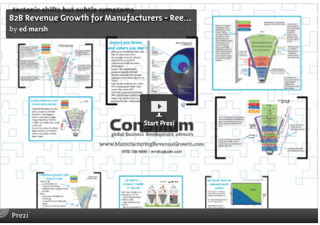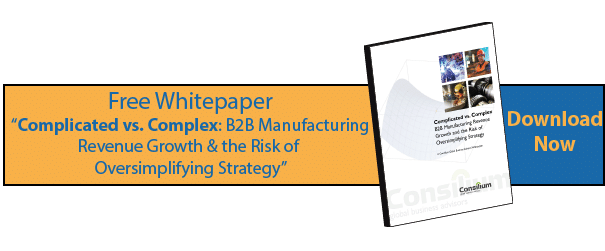"Because that's the way it's done in our industry"
"When the two solid fuel engines that power the Space Shuttle into space were designed, for example, they could not be much more than 4' 8.5" wide - the width of the rail line that was to transport them from Utah to Florida. This was the width of the line because the laborers who built it last century came from England, and their forefathers had built the tramlines in England along the paths made by the horses and carts that preceded them. These paths were 4' 8.5" wide because that was the width of the roads, built by the Romans, on which they were based. Which is why a design feature of one of the most advanced pieces of technology ever produced was determined by a Roman road engineer over 2000 years ago." A Beautiful Constraint, Morgan & Barden
If you're like most companies, you're coming off an annual planning cycle. Did you stop, anywhere in that process, to sniff out assumptions from your own legacy Roman road engineer?
Probably not.
Realistically in finance and operations, they may not matter. Double entry accounting was created long after the Romans, and the widespread implementation of LEAN over the past couple decades has taught manufacturers to search for constraining assumptions in their manufacturing operations as an article of faith.
But what about in the top line growth functions? Sales? Marketing? Channel sales? How about business model implications of evolving technologies like 3D printing and IoT?
In most cases those functions are limited by path dependence - a company's self limiting assumptions about how they've done things and therefore how they will naturally do them going forward.
Your strategy f/stop
Most businesses see their current situation in brilliant clarity - and the background is pretty fuzzy. In other words, to use a photography analogy, they've got their aperture fully opened and have a limited depth of field. While it may feel intuitively sensible to open wider, the reality is that they've got to have some clarity of view of the foreground and background, in addition to their focus on the present.
That's challenging for a couple well know reasons. First, it's scary. Start looking into the future and you're absolutely guaranteed to be wrong often (something many alpha entrepreneurs are loathe to accept) and you'll also start seeing things that challenge the very stability of your environment. Many prefer to ignore those challenges. It's more comfortable....for a while.
Second, it creates uncertainty and complexity. Everyone knows that the only way you can successfully run a business is with three key bullet points after all.....
When you start to look, and see, further into the future you may not know how to interpret or react to what you're seeing. That's OK. Neither do your competitors. The difference is that you're acknowledging it and beginning to think about it. And that is itself an enormous competitive advantage.
Role of a management consultant
Many think of a consultant as someone that comes in and maps out a plan to reduce procurement costs, increase inventory turns, reduce A/R days outstanding, improve employee retention, etc. Those are are important operational details and there are brilliant management consultants that help with all of those.
But for those to matter, the company must remain viable - and that is the vague, hard to value and critically important function of a management consultant that many industrial manufacturing firms tend to overlook. After all, the founders and managers of those sorts of companies are pretty pragmatic, data driven engineering types.
Many of my clients are manufacturers that provide capital equipment, supplies and services to other manufacturers. And I find that things get quiet when I start to ask questions like:
- If most prospects find you and contact you directly, and then you pass them off to your sales channel, how do you envision sales channel participating in the future?
- What would happen when your customers start to shutter facilities as their manufacturing is done remotely with 3D printing?
- How will your capital equipment sales be impacted by an increase in interest rates or tightening in credit availability?
- Which of your competitors will be the first to create a "sharing economy" model for your industry?
- What demographic trends are impacting your customers' customers and their purchasing habits?
- You buy the same way today as in 1980, right? I mean when you think you may need something your first stop is to pull the green Thomas Register off the shelf and start dialing, right?
- Which of your customers would most likely want to vertically integrate your function into theirs?
- What's the range of recent valuations of companies like yours? What accounted for the variation?
- What data stores does your company have? What are most valuable today? What will be most valuable in five years?
- What's the biggest problem your customers have around your product / service that you can't solve through your product / service?
In other words, it's all about breaking the path dependence.
Start with sales & marketing  alignment
alignment
The first place to do this is in the B2B sales & marketing alignment - the engine of top line growth for industrial manufacturers. I explain that in this 10 minute narrated picture book here.
Then extend
But as a management consultant I also help companies understand how to reduce the risk and increase profits of global sales expansion, and how to defensively position themselves and offensively leverage key disruptive changes like those touched on by the questions above.
The 20th anniversary of Clayton Christensen's theory on disruptive innovation has sparked renewed debate about how to define and respond. What nobody debates is that disruption is occurring and accelerating.
Yet precious few lower middle market companies are able to divert high level management attention from operational priorities.
The determination to do so will likely define those companies that will thrive over the next several decades. And that's where the right management consultant can help.



